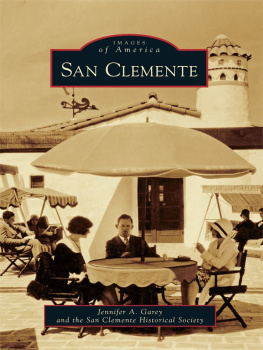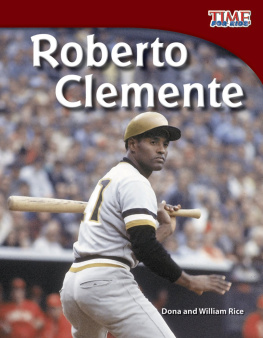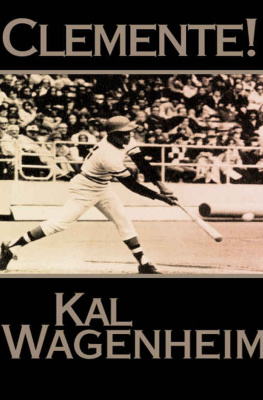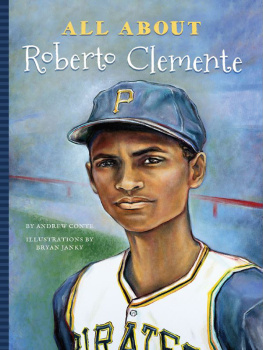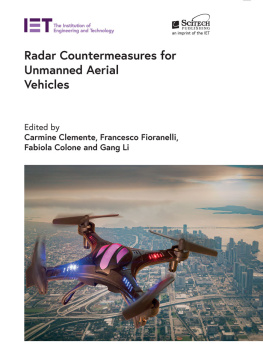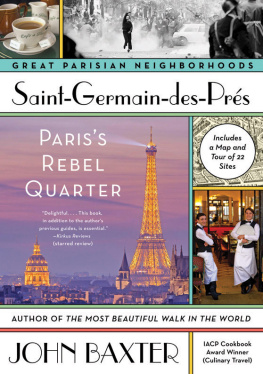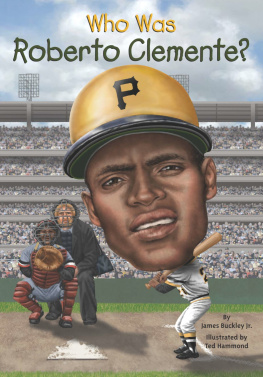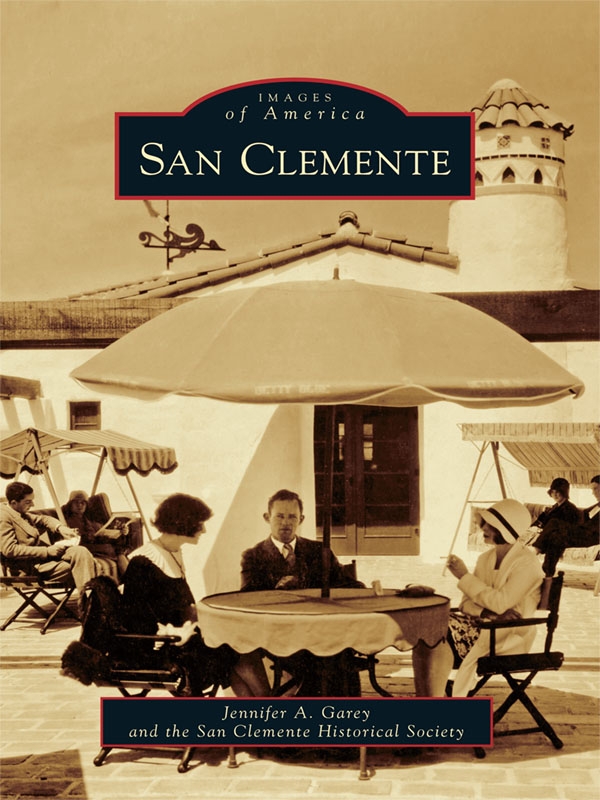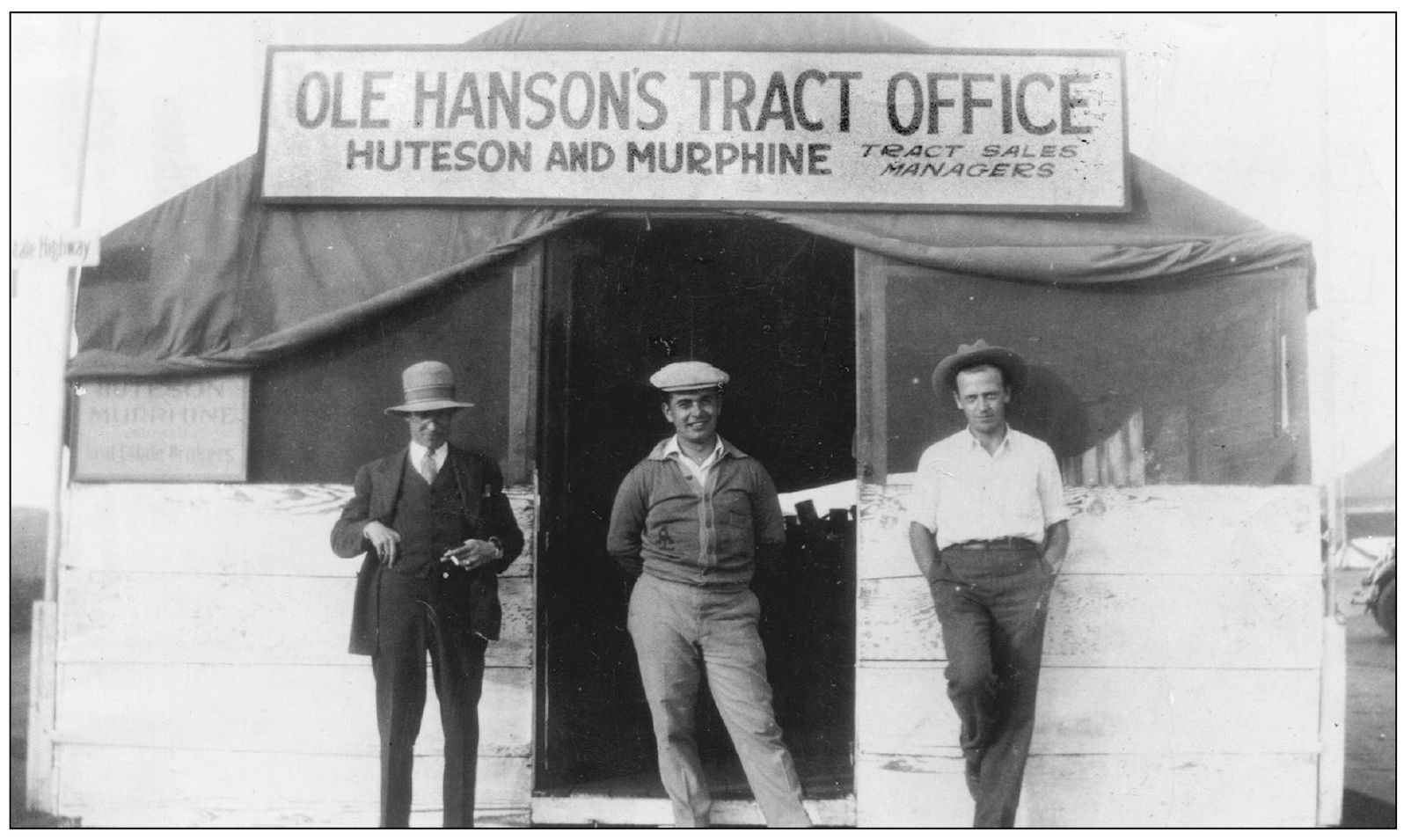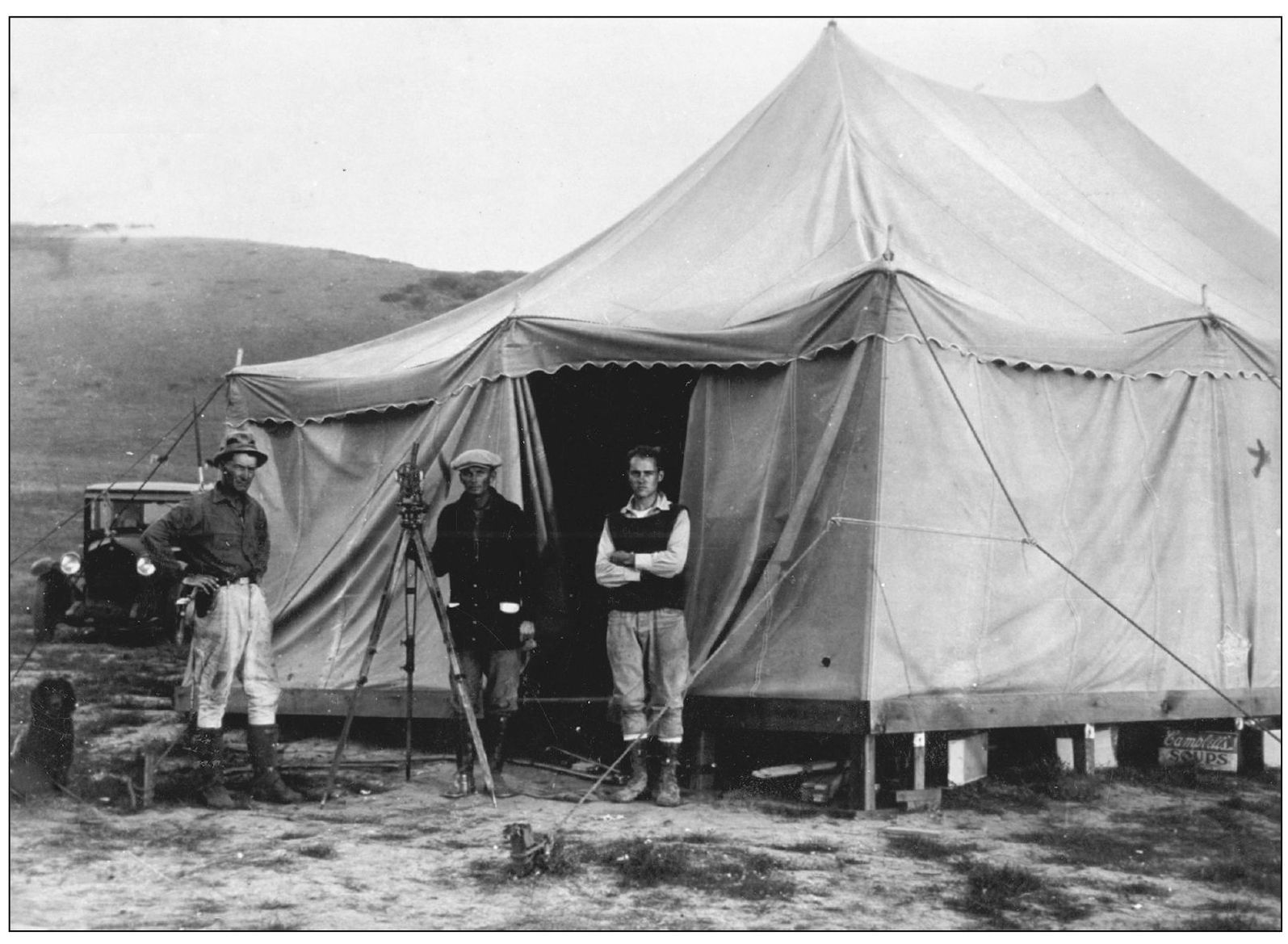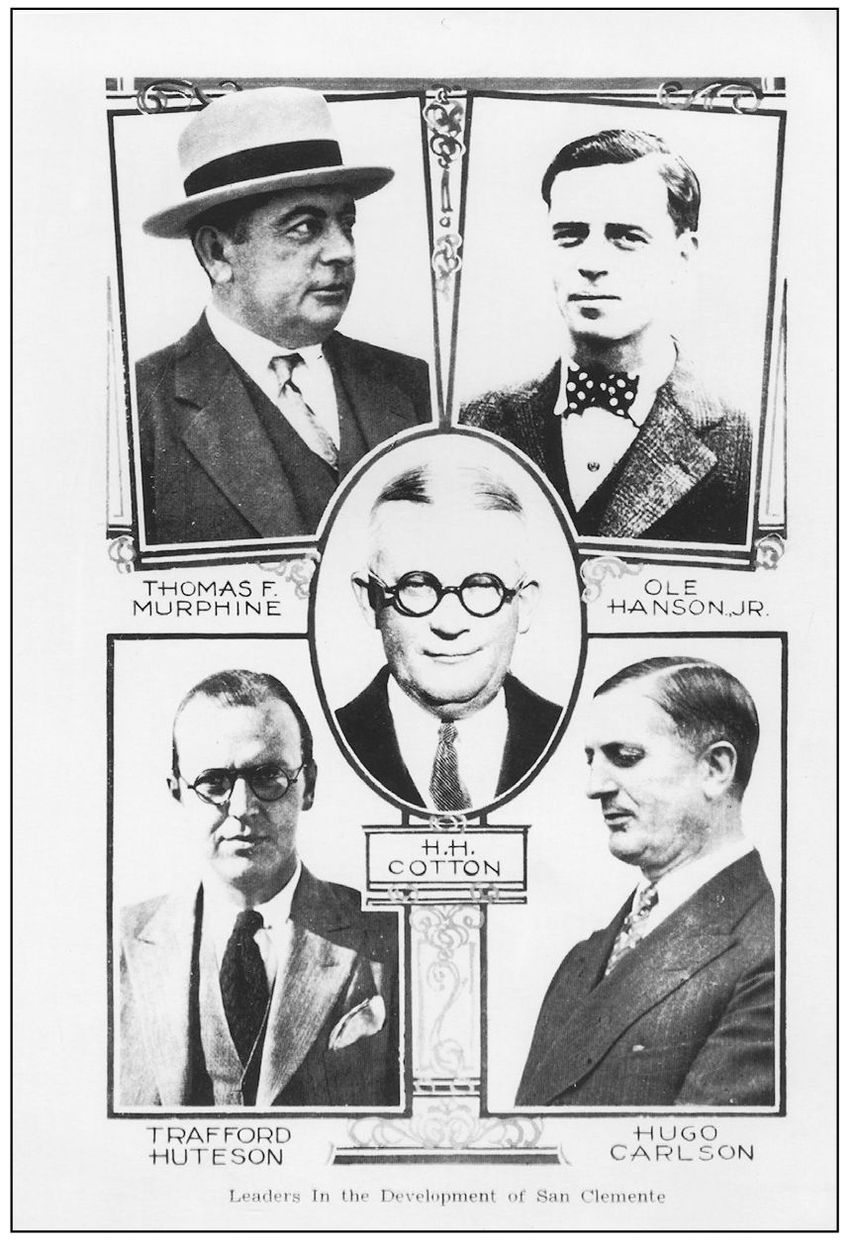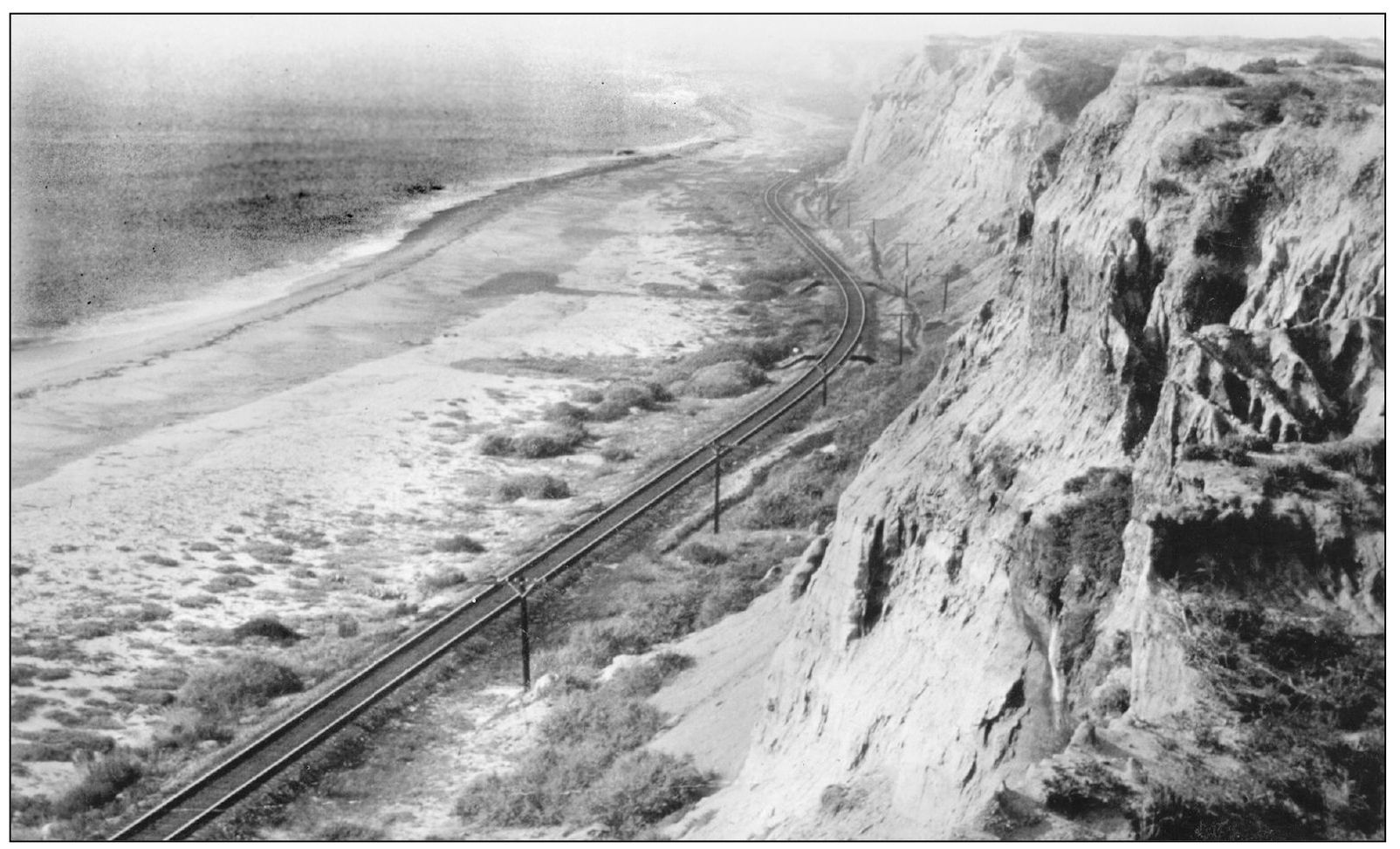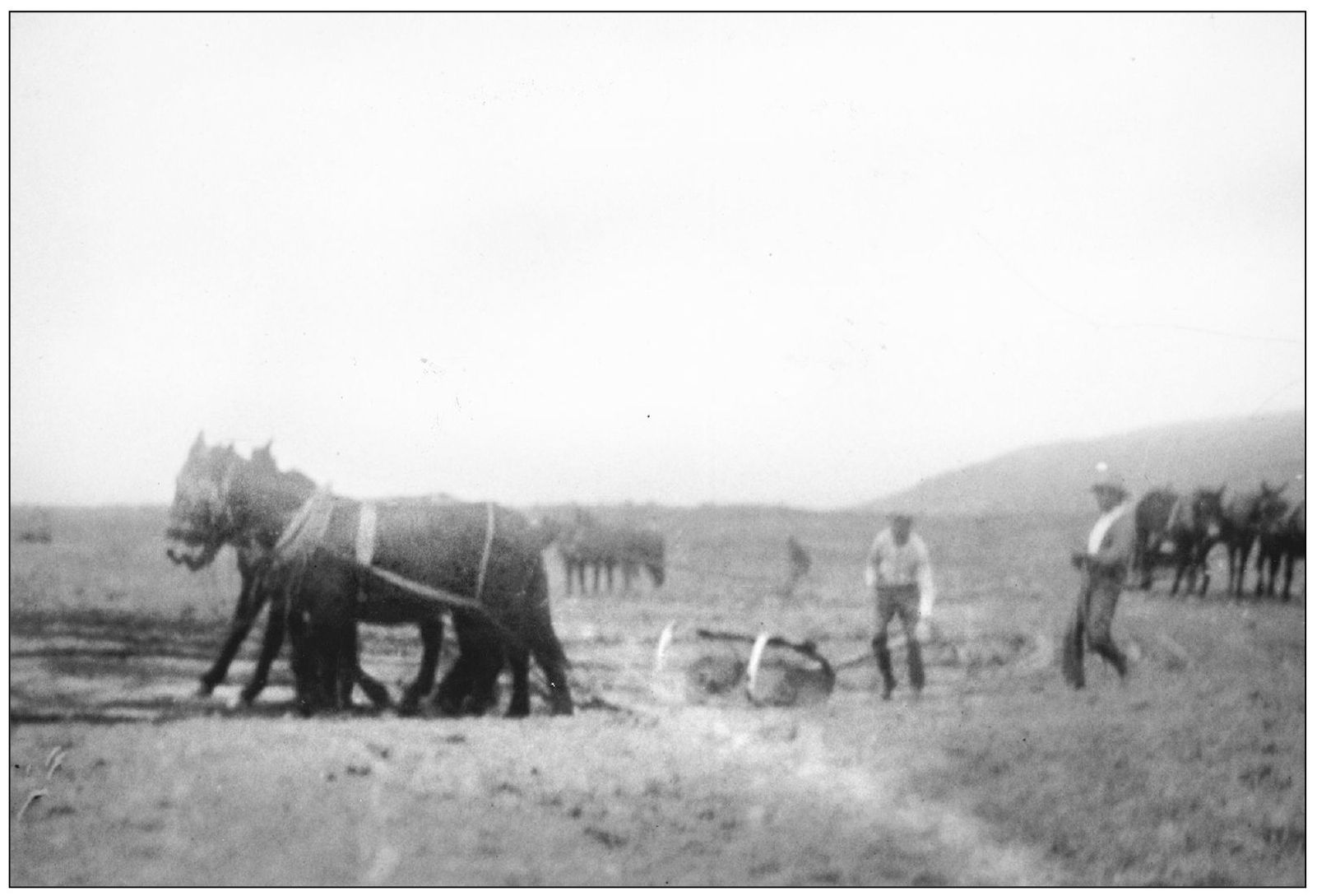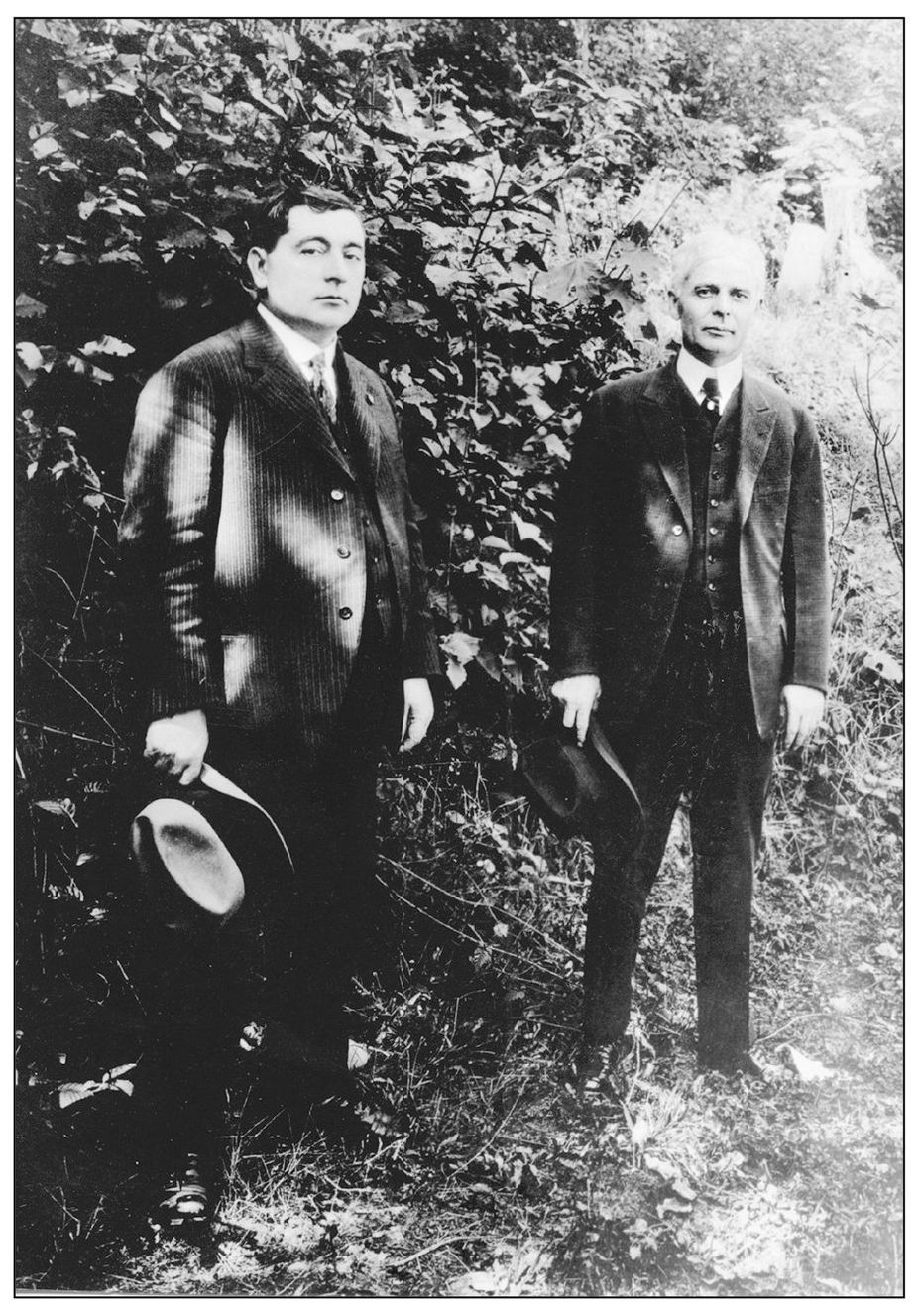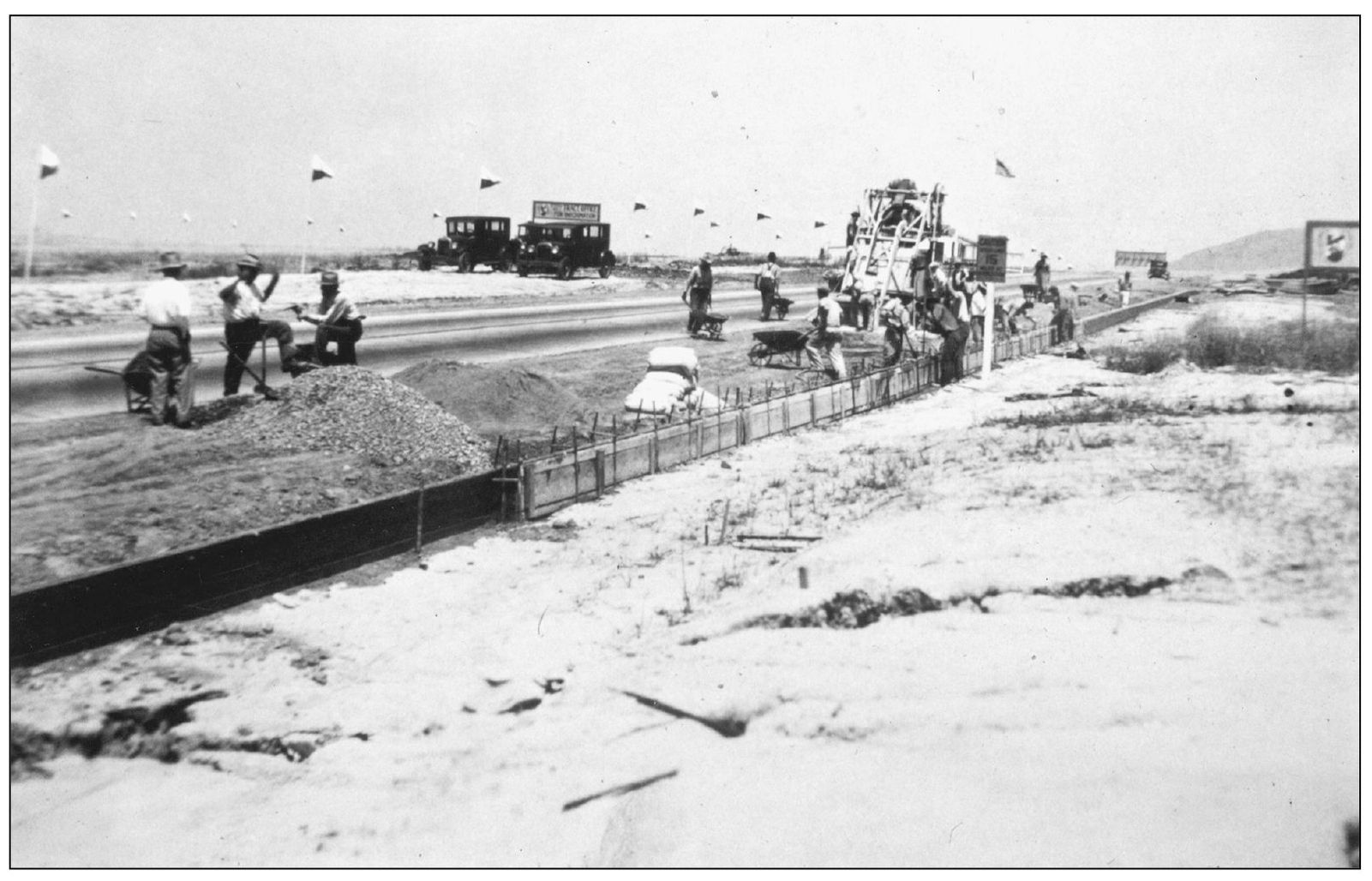ACKNOWLEDGMENTS
So many deserve thanks in putting this book together. A huge thank-you goes to the San Clemente Historical Society, who graciously agreed to team together and allowed me to look through numerous photographs. Thank you to board members and committee chairs Mary Ann Comes, Mike Cotter, Lee and Dena Van Slyke, Dale Larsen, Georgette Korsen, Chris McCormack, Donald Prime, Bill Bluett, Lois Divel, Raad Ghantous, Larry and Jane Culbertson, and Jim Proett. A special thank-you to Pat Bouman for patiently putting up with my continual requests for photographs, even if it meant going into her personal collection. She has been an invaluable resource and an invaluable friend. Thank you, Mike Cotter, for believing in me and for sharing your insight and clear direction, while at the same time allowing me to fly. Thank you to G. Wayne Eggleston for sharing your profound love for San Clemente and its people. Thank you to Mary Ann Comes, whose strength is only matched by her wonderful smile, for her belief in this project and her commitment to the San Clemente Historical Society and the community. Thank you to Lee and Dena Van Slyke for your dedication in keeping the San Clemente story alive. Thank you to town matriarch Lois Divel for sharing her personal collection and her honest and thorough review of the text; many thanks to her family for their lifelong dedication to San Clemente. Thank you to Liz Hanson Kuhns, a beautiful soul with an infectious laugh, who patiently and gracefully reviewed the text, and who today embodies the generosity, strength, and vision of the Hanson family. She generously loaned images from her personal collections for inclusion in this book, a beautiful way to honor her family and the vision of Ole Hanson and the OHO. Thank you to Alex Forster, the late Dorothy Fuller, and Virgil Westbrook for their donations of photographs to the San Clemente Historical Society. Thank you to my friend Martha Collins for her amazing skills with the English language. Thank you to Debbie Seracini, Scott Davis, Devon Weston, David Mandel, and the staff at Arcadia Publishing. Without them, this would not be possible. All photographs are from the San Clemente Historical Society Archives, except as noted. The information contained in this book is derived from many invaluable sources: The Story of San Clemente: The Spanish Village by Homer Banks; The Heritage of San Clemente by Doris Walker; Lloyd Hansons Inside the Casa ; From Fishcarts to Fiestas by Blythe Welton and Mary Lou Nicolai; the Downtown Business Associations The San Clemente Story ; as well as numerous news, notes, and recollections from John Hall, Patricia Hobbs Hendry, Fred Swegles, town patriarch Bill Ayer, and the people of San Clemente. Thank you.
Find more books like this at
www.imagesofamerica.com
Search for your hometown history, your old
stomping grounds, and even your favorite sports team.
One
THE BEGINNING
SELLING A VISION
Scotty Watson, Thomas F. Muphine, and Trafford Huteson pose for a photograph outside their Tent Tract Office. On December 6, 1925, Ole Hanson began to share his vision with potential buyers, telling them, We will build a pleasure pier, a golf course and a social club. Ole Hanson and Hamilton Ham Cotton purchased 2,000 acres from Adlai Goldschmidt and borrowed $1 million from Hellman Bank, which was bought by Mercantile Bank, and then by the Bank of Italy. A. P. Giannini of the Bank of Italy (later Bank of America) agreed to match any principal investments Ole Hanson and Hamilton Cotton raised. Ole Hanson and H. H. Cotton were joined by investors Cornelio Echinque, Frank Forster, William May Garland, H. G. Moulton, C. C. C. Tatum, and Ed Fowler. (Courtesy of Liz Hanson Kuhns.)
Horace Taylor, William Ayer, and Ole Hanson Jr. begin surveying the villages first 125 acres. Ole Hanson wanted his city to resemble a theater, using the lands natural bowl-shaped formations, with the ocean as the stage, the pier and bowl as the orchestra, and the homes and streets as the mezzanines and lodges. Every home would have an ocean view.
The citys first investors included Hamilton H. Cotton, pictured in the center. Pictured from upper left are founding members of the Ole Hanson Organization (OHO) Thomas F. Muphine (the citys first mayor and a close friend of Ole Hanson), Ole Hanson Jr. (Ole Hansons son and key sales representative), salesman Trafford Huteson, and Hugo Carlson. (Courtesy of Liz Hanson Kuhns.)
Traveling down Highway 101, the scenery was cattle and orange groves. Lloyd Hanson recalls his first visit to San Clemente. Ole Hanson turned onto a wagon trail soon to be called Avenida Del Mar, which took motorists to the ocean. However, cattle were still grazing in the area. Ole said, Forster is going to herd them to San Onofre; thats the county line. You can tell; theres a trestle there. (Courtesy of Liz Hanson Kuhns.)
Traveling the train tracks winding along the coast, Ole Hanson first saw potential in the location for his vision of a Spanish Village. Later he would drive down Highway 101 toward San Diego past the Mission San Juan Capistrano and the Goldschmidt palisades. His vision of building a village of white stucco homes with red tile roofs grew steadily for five years until the opportunity to begin building his dream city presented itself. (Courtesy of Liz Hanson Kuhns.)
The mules are put to work on building San Clemente. An 8-foot-tall wooden post set on a corner of Highway 101, also known as historic El Camino Real, marked the corner of Avenida Del Mar. The only other main artery through the area was the Santa Fe Railroad. (Courtesy of Liz Hanson Kuhns.)
Thomas F. Murphine (left) and Ole Hanson stand together. The first official act of Thomas F. Murphine, San Clementes first mayor, was to accept on behalf of the city a water system built by the Hanson and Cotton syndicate worth $500,000 and purchased by the city for $1.

